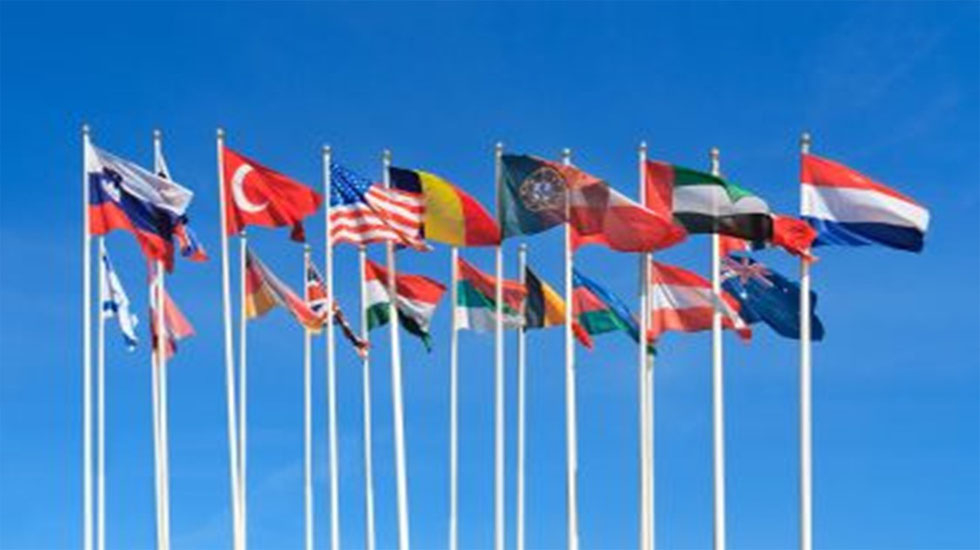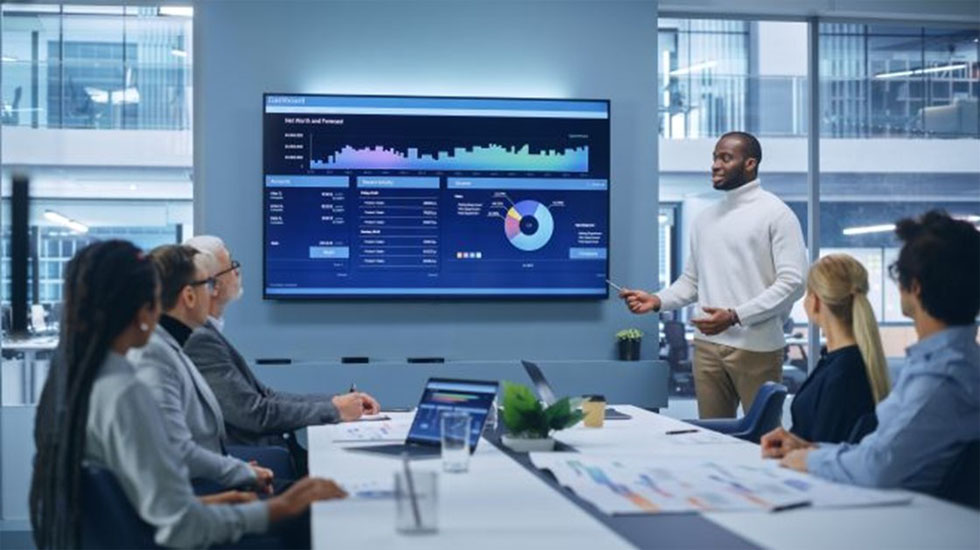Leading change:
KPMG and ASCM Hosted Executive Summit


Rising tariffs, economic shifts, and persistent supply chain disruptions are compelling businesses to reassess their strategies. KPMG and the Association for Supply Chain Management (ASCM) hosted an executive summit that brought together leading experts, including Meagan Schoenberger, senior economist at KPMG LLP; Stephanie David, Supply Chain Strategy & Analytics US practice lead at KPMG LLP; Douglas Kent, Executive Vice President of Corporate and Strategic Alliances at ASCM; Grant Harris, former assistant secretary of Commerce for Industry and Analysis; and Tonilyn Lam, Program Management, Climate Action, Environmental Protection, Business Sustainability, United Nations Global Compact, to explore the economic and policy-driven factors affecting trade, supply chains, and sustainability.
This event shed light on how companies are managing tariff costs, adapting to geopolitical risks, and tackling sustainability challenges amid stricter regulations. The discussions highlighted ways businesses are adapting to these complexities.
To learn more, visit ascm.org
Panelists discussed the following topics:
Economic and tariff impacts

The unpredictability of rising tariffs is creating significant economic disruption and uncertainty, much like a broken traffic light. Companies and investors are more concerned about this uncertainty than the tariffs themselves. The KPMG base case predicts tariffs rising to a 17 percent effective rate, forcing businesses to absorb costs or pass them on to consumers. The administration aims to protect domestic industries and generate revenue through tariffs. Despite this, strong consumer activity drives economic momentum, following patterns since the 1980s.
Businesses respond to tariffs differently, either passing costs on to customers or absorbing them and accepting lower margins. Many companies are adopting a “wait and see” approach regarding tariffs. The lack of global trade visibility in some companies highlights pricing and tax bracket issues. The forecast is that the Fed will cut rates twice more in 2025, October and December. Central banks worldwide, including those in the US and UK, are now incorporating supply chain disruptions into their inflation models. This marks a significant shift in recognizing the importance of supply chains as a key economic factor.
1
Supply chain disruptions and resilience
Disruption in the supply chain is the new normal and the uncertainty today can be paralyzing. Supply chains today are no longer collateral damage but the target—they're front and center, the focus at the C-suite and board level, so supply chain executives have the daunting task of not only keeping the lights on in running the day-to-day operations, but also equipping themselves with the right capabilities to sense, predict, and proactively build response plans to help mitigate the uncertainty that exists today To thrive, leaders must embrace innovation, flexibility, and agility, adapting to risks such as environmental issues, cybersecurity threats, and geopolitical shifts.
Nearshoring, the practice of bringing supply chains closer to home, has emerged as a popular strategy for diversifying and securing supply bases, but it requires significant investments in technology and automation. Having a balanced approach will be key. Executives must balance between using precision in thinking about which product and market combinations could benefit from nearshoring and staying agile to changing trade policies and impact on cost to serve through fit-for-purpose technology and visibility investments.
Scenario analysis is crucial for building compelling arguments for nearshoring and other resilience-building strategies. The cost of inaction in the face of supply chain disruptions is high, potentially threatening the very survival of businesses. Companies face challenges in making investment decisions due to uncertainties, with some struggling to get board traction on investments.
Geopolitical risks and strategic planning

Companies must manage geopolitical risks and systemic issues to stay competitive. Challenges range from avoiding forced labor to tackling dependencies on critical materials. Viewing these challenges as strategic opportunities and adopting a proactive approach can enhance competitiveness. Scenario planning is vital for managing geopolitical risks, especially in US-China trade relations. Comprehensive scenario analyses help develop robust strategies and contingency plans. Proactive supply chain risk management leads to success, requiring clear communication with executive leadership.
1
Corporate sustainability and regulatory pressures
Corporate sustainability and regulatory pressures significantly impact supply chain strategies. Aligning businesses with the United Nations Global Compact’s ten principles covering human rights, labor, environment, and anticorruption is essential.
Global Compact participants consist of 20,000 mainly small and medium-sized enterprises that face challenges in achieving Sustainable Development Goals (SDGs) due to supply chain risks. Only 17 percent of SDG targets are on track, with many showing minimal progress or regression. To support companies, the UN Global Compact is launching the Sustainable Procurement Framework, Spark Program, and Sustainable Supplier Impact Program to support companies in enhancing supply chain sustainability.
Regulatory pressures drive sustainability, with annual reporting required for Global Compact participants. High compliance rates show the importance of sustainability to businesses. ASCM has aligned its standards with the UN Global Compact, focusing on living wages and other triple bottom line aspects.
Embracing change. Securing success.
In uncertain economic times with geopolitical risks and sustainability challenges, resilience, strategic planning, and corporate responsibility are crucial. Companies that adapt and embrace these principles can thrive and create lasting value in a dynamic business world.
Explore more

Supply Chain Stability Index
The rising frequency and intensity of crises calls for new insights

Six supply chain trends to watch in 2025
From cost management to risk mitigation, Scope 3 to new technology, 2025 is expected to present plenty for supply chain leaders to manage.

Navigate supply chain disruptions with integrated AI planning
Integrated AI planning equips your supply chain with visibility, transparency, and more.

AI-powered insights for your supply chain challenges
Enhance, streamline, and safeguard your end-to-end supply chain operations with our strategic insights powered by AI.

Supply Chain @ KPMG
Tune in to our discussions with industry leaders on navigating the intricate supply chain landscape.
Subscribe to Real Insights for Operations
The KPMG Real Insights for Operations Newsletter shares our supply chain research, analysis, and events—all designed to optimize supply chain operations and elevate supply chain management.
Meet our team


